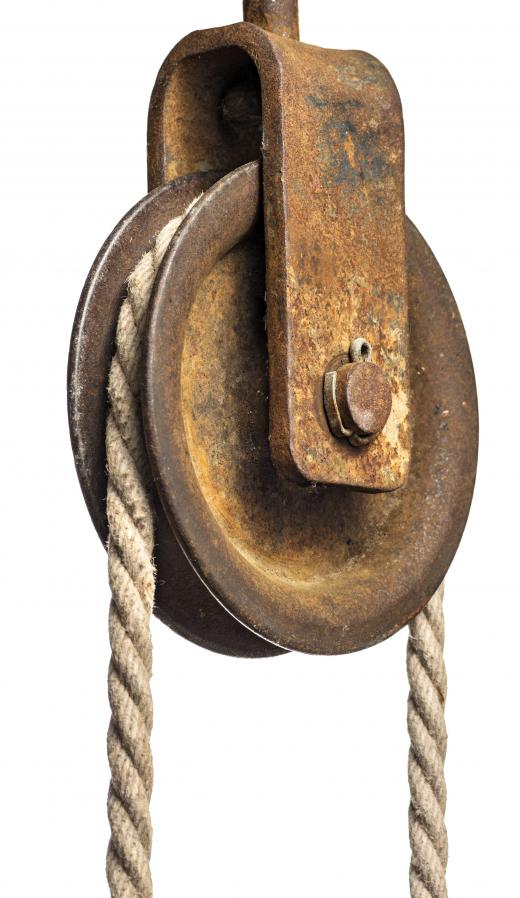An electric hoist is a device that is used to lift and lower objects in a vertical plane. Hoists can be attached to hardware that will also allow them to move horizontally, expanding their usefulness considerably. A number of manufacturers of equipment produce electric hoists, along with accessory equipment, and they are available through hardware stores, catalogs, and direct suppliers. When purchasing a hoist, it is important to select a product with the right weight rating, to ensure that it will not fail or burn out during use.
Hoists have been used by humans for thousands of years to move loads that people are not capable of moving independently. Originally, hoists were operated by hand, with block and tackle or pulley systems. With the development of the engine, it was possible to develop hoists that used a motor for power, expanding their capability considerably. Electric hoists use an electric motor to operate.

Such hoists can be wired directly into an electrical system, connected to electric cables, or run by an electric generator. The power of an electric hoist varies, depending on the design. A hoist hook is attached to items that will be lifted with the hoist. Chain or rope may be used, with higher-rated hoists being more likely to lift with chain because it can be sturdier. Chains and ropes are also weight-rated to provide information about the types of loads they can handle.
A basic electric hoist will only operate vertically. Mounting it to a crossbeam allows operators to move it in horizontal space as well, as seen in facilities like docks and warehouses where loads need to be lifted and repositioned. Some electric hoists are designed to operate in any plane, and can perform tasks like pulling objects across a floor or supply line. These devices are more versatile and can be more suitable for some types of work environments.
Operation of an electric hoist is accomplished with a remote switch. The switch can be used to raise, lower, and release the hoist. Hoist operators need to be very aware of their surrounding environment in order to identify potential risks and prevent accidents. It is also important to make sure that loads are properly secured before they are hoisted to reduce the risk of injury and property damage. Multiple people may be involved on a crew, securing and checking items on the floor while an operator controls the electric hoist from a distance.
Ever since she began contributing to the site several years ago, Mary has embraced the exciting challenge of being a About Mechanics researcher and writer. Mary has a liberal arts degree from Goddard College and spends her free time reading, cooking, and exploring the great outdoors.

